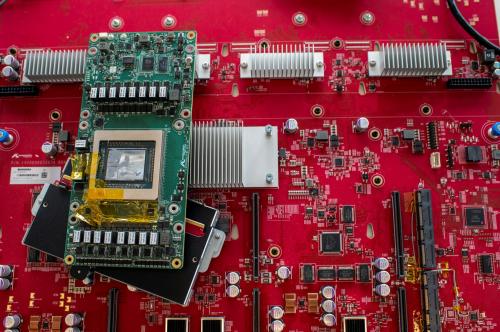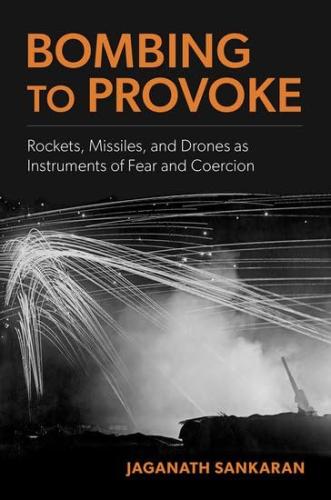One of the more contentious debates in homeland security over the past several years has concerned fusion centers—state and local run organizations dedicated to information sharing and analysis. These centers, which are funded by state and local governments but also receive federal support, have raised concerns with civil libertarians who argue that they threaten civil rights. These centers have also rankled good government advocates who question their effectiveness. But while fusion centers certainly saw their share of shortcomings in their early years, they’ve made substantial progress since then and now play an important role in addressing problems identified after the 9/11 attacks.
Fusion centers began to emerge in the early 2000s when state and local governments sought to promote greater collaboration and information sharing in an effort to prevent future acts of terrorism. The number of fusion centers grew dramatically, from nine in 2003 to 78 by 2014. Most states have one, and a number have more than that. Massachusetts, for instance, has a statewide fusion center in Maynard and an urban center in Boston. California similarly has a statewide center, and it also has regional centers in Los Angeles, San Francisco, Orange County, Sacramento, and San Diego.
At their core, the purpose of all fusion centers is largely similar: they receive, analyze, gather, and share information about threats. However, as state- and locally-run organizations, they often vary. For example, while some focus on terrorism, the responsibilities of others have evolved to include different threats, such as crime and natural disasters. Fusion centers typically issue bulletins and other analytical products, and they act as hubs, sending information up to the federal government and out to members of their community, as well as to other fusion centers around the country.
The federal government has given significant support to these efforts. The Department of Homeland Security, working with the Department of Justice, has developed guidelines for the centers that address performance, privacy, governance, and other areas. Fusion centers can receive funding through grant programs that FEMA administers, but the funding must be used to improve shortcomings in meeting these standards. The federal government also provides training and deploys personnel to the centers to play a variety of supporting roles. In fact, the Government Accountability Office (GAO) found nearly 300 representatives from agencies—such as the Department of Homeland Security’s Office of Intelligence and Analysis, TSA, the FBI, and the DEA, among others—at fusion centers around the country in 2013.
While their benefits are obvious, fusion centers have also drawn a fair amount of criticism—some of it warranted, some less so. One of the most significant critiques came from the Senate Homeland Security and Governmental Affairs Committee’s Permanent Subcommittee on Investigations, which issued a scathing report in 2012. (Note: While I didn’t work for the subcommittee that produced this report, I did work for the full committee when the report was issued and advised the chairman on the subject.) It argued that fusion centers provided low-quality intelligence to the federal government and were not contributing in a meaningful way to counterterrorism efforts. The report also raised concerns that the centers were monitoring lawful political and religious activities, charges that have been echoed by the ACLU and NYU’s Brennan Center. Moreover, it found that FEMA was doing a poor job tracking the funding it awarded.
There was truth to some of these claims. FEMA has long had problems with grant monitoring, for example, although this is an issue that extends beyond fusion centers. But in evaluating their effectiveness, the report limited its analysis to the information fusion centers sent up to the federal government and neglected to examine what they sent out to other state and local agencies. Moreover, federal officials challenged the idea that the centers were not contributing to counterterrorism efforts and pointed to cases that showed otherwise—such as the “Raleigh Jihad” case in 2009 and the 2011 disruption of a plot to attack a Seattle military recruiting center.
In recent years, we’ve seen progress on some of these problems, although not all. In 2013, Michael McCaul (R-TX), chairman of the House Committee on Homeland Security, and Representative Peter King (R-NY) released a report that offered a more positive view of fusion centers. It pointed to numerous instances where they had proven beneficial—such as in Colorado, where the state fusion center had helped streamline information sharing concerning wildfires, and in Arizona, where the center had played a key role in a significant drug investigation. GAO has examined the subject as well and late last year reported that the Department of Homeland Security has helped centers improve their capabilities and address performance problems.
But this is not to suggest that all is perfect. There are still problems that need to be addressed. FEMA continues to struggle to track the amount of federal funding going to fusion centers. In its review, GAO found that FEMA had improved its process for keeping tabs on the funding but that it was still unreliable. This problem needs to be corrected. Without knowing how much federal funding goes to fusion centers, it’s difficult to evaluate whether it’s well spent. Moreover, the federal government needs to prioritize the support it provides. As the House Committee on Homeland Security pointed out in its report, when trying to find the balance between state and local priorities and national ones, fusion centers tend to lean on the former. Fusion centers are free to do this, but federal support needs to focus on the latter.
Finally, fusion centers need to do more to address civil liberties concerns. The Department of Homeland Security requires centers to have a privacy policy in place, which all centers have. But GAO’s work points to some trouble. For example, fusion centers have evaluated whether they follow proper privacy, civil rights, and civil liberty protections, but it’s unclear if they’re correcting deficiencies they find. Further, more than 40% of the centers are not reviewing their analytical products for civil liberty infringements—a large enough number to raise eyebrows. Fusion centers need to take civil liberties concerns seriously, and that means not only having the proper policies in place but also ensuring that they are followed. For fusion centers to succeed, they need to have the support of the public. To do this they need to show that they’re protecting the public’s rights, not just its security.


Commentary
Fusion Centers: What’s working and what isn’t
March 17, 2015